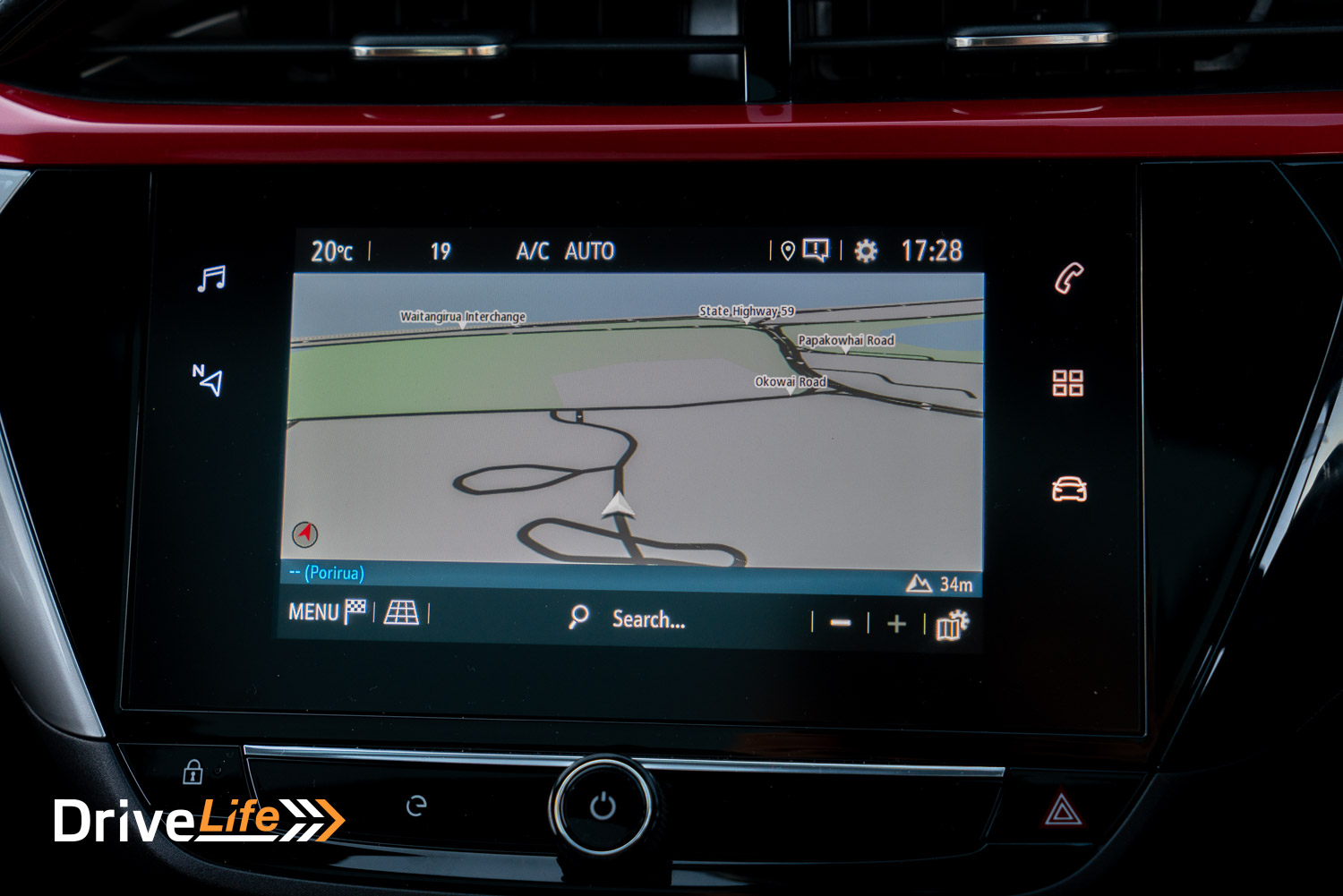If you hear the word “Opel”, what comes to mind? Chances are, some of you mistook it for Opal gemstones.
But no, Opel is a car company. If you had your driver’s licence in the early 1990’s, you might remember them, because that’s when they were last being sold new in New Zealand. However, if you’re younger than 30, I wouldn’t blame you for having crickets in your head.
It may come as a surprise to many, but Opel was founded in 1862 and has been making cars since 1899. Their headquarters still exists in the same German town of Russelsheim am Main, where it all started. In 1931, Opel was taken-over by General Motors, existing as a sister company to Vauxhall.
Despite the storied history, Opel has had an unsettled past 5 years. In 2017, their long-time parent sold them, along with Vauxhall, to PSA Group, fusing themselves with Peugeot. No less than 4 years later, Peugeot got sucked into the Stellantis Group.
Since the dust settled, Opel has found its feet, arriving in New Zealand with the promise of electrified variants of its standard range from the word go. This includes the Corsa-E, the Mokka-e and soon, the Astra-e PHEV.
Today, we’ve got the Corsa-E. But is it enough to help the brand stick around this time?
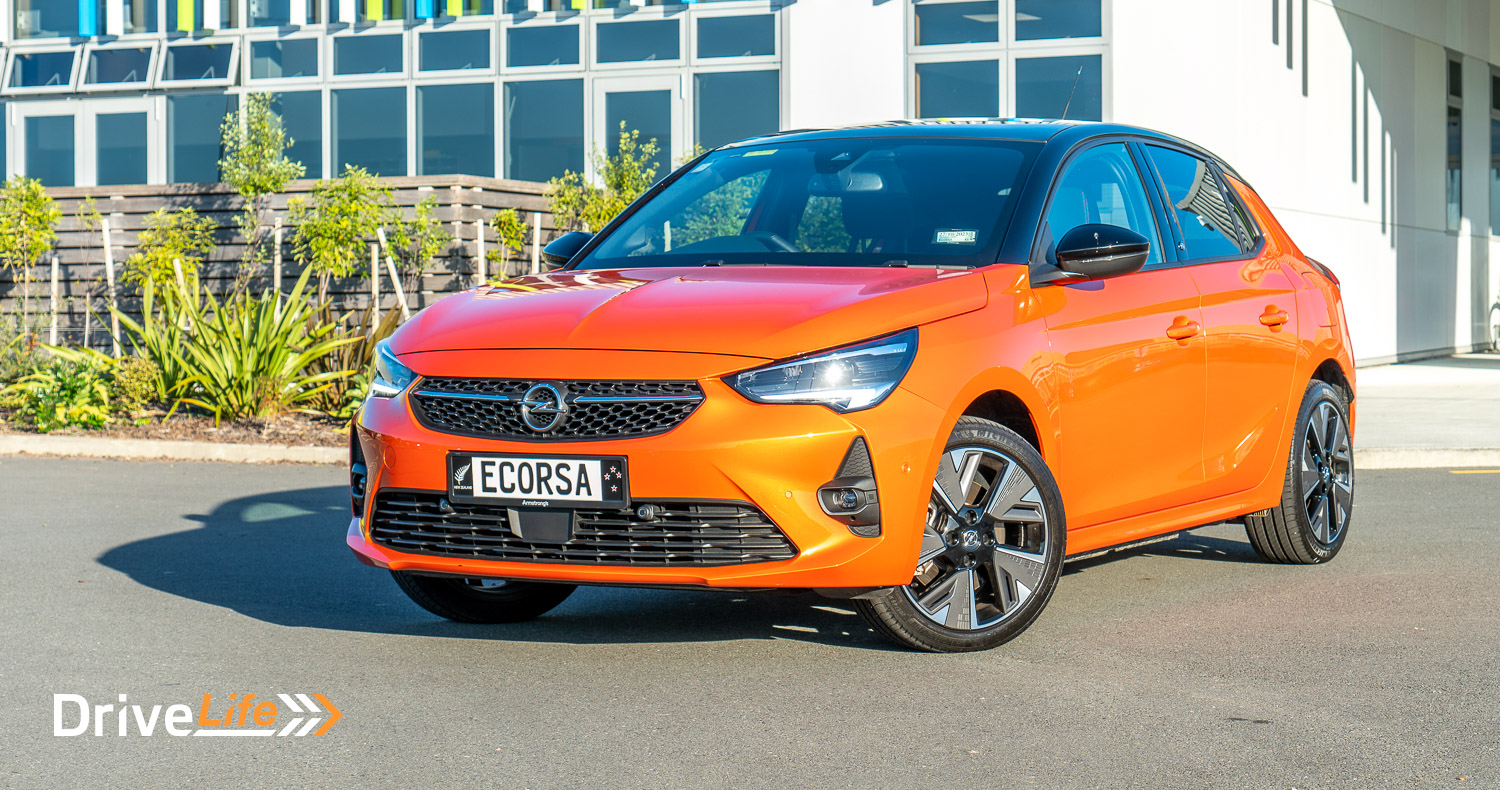
What We Like and Dislike About The 2023 Opel Corsa-E
| What we like | What we don’t like |
| Exterior styling Good range for small size Ride quality Handling | Average performance Shabby infotainment and poor reversing camera Cramped back seats Not as stylish as the Peugeot 208-e Slightly on the expensive side |
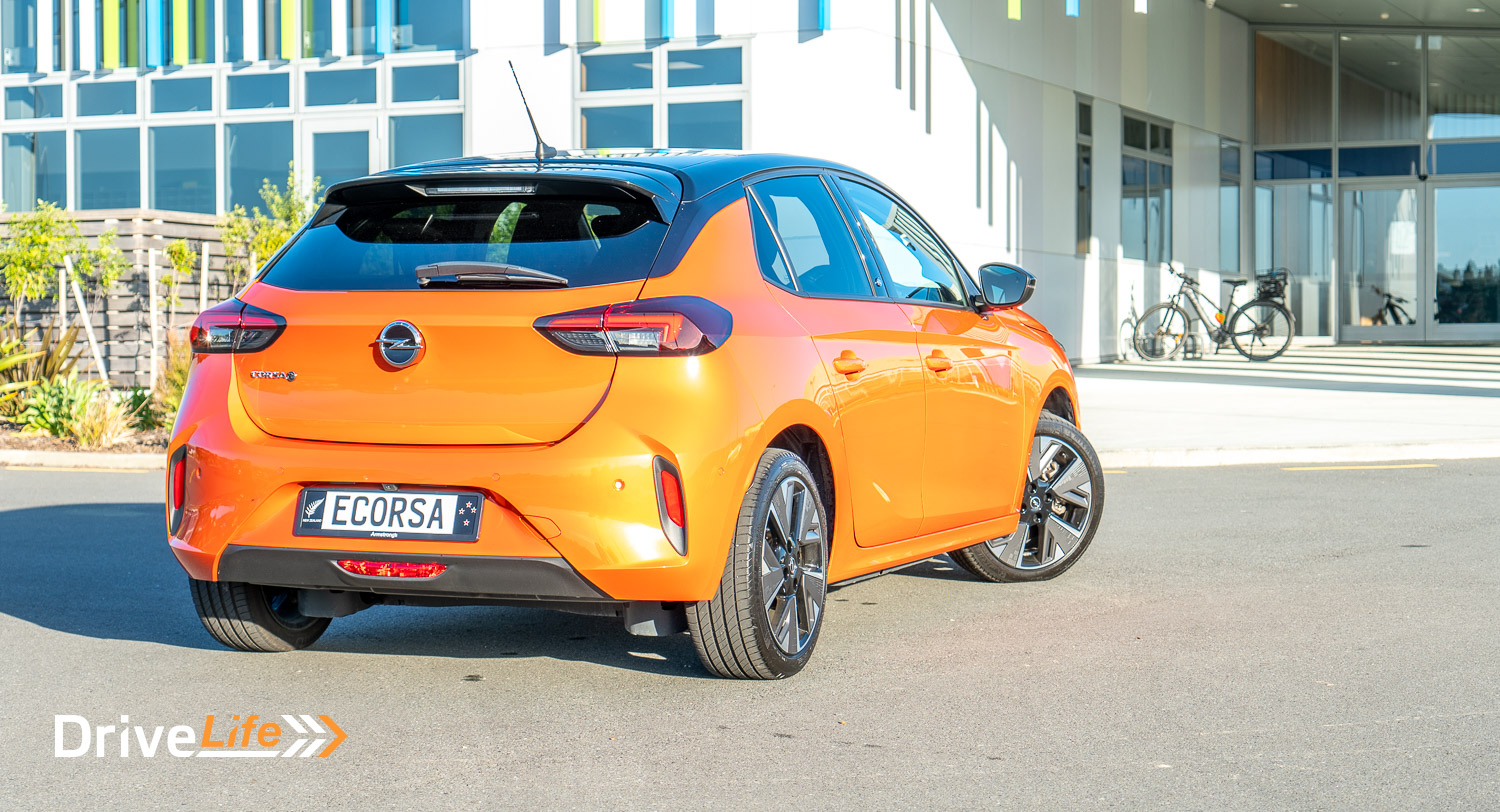
What’s In the 2023 Opel Corsa-E Range?
The Opel Corsa-E range is about as straightforward as it gets. There’s two models available, one is petrol and the other is electric. SRi is the only trim spec available.
| Model | Price* |
| Opel Corsa SRi | $36,990 |
| Opel Corsa-E SRi | $59,990 |

2023 Opel Corsa-E Standard Equipment Highlights
- 17” alloy wheels
- 7” centre touchscreen
- 7” digital multi-colour instrument cluster
- All windows auto up/down
- Alloy pedals
- Apple CarPlay and Android Auto functionality
- Auto-dimming rearview mirror
- Automatic headlights
- Automatic high beams
- Automatic wipers
- Blind Spot Monitoring
- Cruise control
- DAB audio
- Diamond black roof
- Dual Zone Climate Control
- Heated and electric folding exterior mirrors
- Heated front seats
- Keyless entry and start
- Lane Keeping Assist
- Leather steering wheel
- LED DRLs
- LED fog lights
- LED Matrix headlamps
- LED rear lights
- SatNav
- Speed limiter
- Traffic sign recognition
- Twin exhaust pipe extensions
- Tyre pressure monitoring
- Welcome Me and Follow Me Home lighting
The Corsa-E adds:
- Adaptive cruise control with stop/go
- Active Emergency Braking with night function, pedestrian and cyclist detection
- Alarm system
- 17” two-tone alloy wheels
- Lane Positioning Assist
- Heated steering wheel
Optional:
- Panoramic Glass Roof – $1,990.
There are 6 colours to choose from for your Corsa-E. Funnily enough, the only colour that doesn’t come with an extra charge is Power Orange. If you’re not interested in making such a bold statement, you may have the others for an extra $550.
- Power Orange
- Voltaic Blue
- Hot Red
- Diamond Black
- Quartz Grey
- Jade White
For more information on Opel Corsa-E, check out the Opel New Zealand website.


How Does The 2023 Opel Corsa-E Compare To Its Competition?
Not all of these options are hatchbacks. Instead, we’ve gathered many options that sit within the same price band. The MG 4 and GMW Ora Good Cat are due to arrive later this year. All prices below exclude the refund or additional cost of the New Zealand Clean Car Programme.
| Make/ Model | Battery Capacity kW-hr | Power/ Torque kW/Nm | 0-100km/h seconds | Range (WLTP) | Boot Space, litres | Price (excl CCP) |
| Mini Cooper SE EV Hatch | 32.6 | 135/270 | – | 233 | 221 | $70,155 |
| Mazda MX-30 | 35.5 | 107/271 | – | 224 | 341 | $68,590 |
| Tesla Model 3 Standard Range | 62.3 | 208/375 | 6.1 | 491 | 649 | $65,990 |
| BYD Atto 3 Extended Range | 60 | 150/310 | 7.3 | 420 | 440 | $62,490 |
| Peugeot e-208 | 50 | 100/260 | 8.3 | 382 | 311 | $59,990 |
| Opel Corsa-E | 50 | 100/260 | 8.1 | 383 | 309 | $59,990 |
| Hyundai Ioniq | 38.3 | 100/295 | – | 311 | 350 | $57,990 |
| MG ZS EV Essence | 51.1 | 130/280 | 8.2 | 320 | 359 | $53,990 |

First Impressions Of The 2023 Opel Corsa-E
The Opel Corsa is a shared platform in two senses. First, it’s offered with either a petrol and an electric powertrain. The design and dimensions are the same regardless of your powertrain choice.
For this reason, you’d be hard-pressed to identify the Corsa-E as an electric vehicle, which is a big positive in my view.
Secondly, the Opel Corsa is a essentially reskinned Peugeot 208, sharing the same chassis, powertrains and more.
This leaves the Corsa in a slight predicament, because the 208 is basically a rolling fashion statement. The 208 is probably one of the best-looking mainstream subcompacts available at the moment.
Even with the bold Power Orange paintwork the Corsa comes with as standard, it looks somewhat plain compared to the Peugeot. Although, that’s the equivalent of saying that you’re the ugliest Hemsworth brother. Because compared to everything else, the Opel Corsa-E is still a fine-looking hatch.

What’s The Interior Like In The 2023 Opel Corsa-E?
Much like the exterior, the Corsa-E’s interior isn’t as out there as the Peugeot 208.

Where the Peugeot has funky 3D effect instrument clusters, retro-styled switchgear and funky neon green inlays, the Corsa has, um, screens. Two of them, and a bucket load of black-trims. Sure, there’s some lashings of red and silver plastics to liven up the joint, but short of that, it comes across as fairly ordinary.
The upshot of ordinary is that the format is easier to learn and navigate compared with its out-there Peugeot brother.

The relative straightforwardness of the Corsa’s cabin is appealing on some fronts, particularly with the balance of button versus touch controls. Rather than following the trend of relegating all controls to a touch-screen, the Corsa has struck a nice balance. The climate controls are physical, simple and clean – it’s perfect. Below near the gear selector are physical switches for the safety assistance systems – also good.
The buttons that didn’t win my favour were on the steering wheel, mainly due to their somewhat clumsy orientation. On a similar note, the indicator and wiper stalks are mounted at a naff angle on the steering column. It took some getting used to, for sure.
The instrument screen follows the Corsa’s functional fashion. That’s to say, it’s not laden with gimmicks. The display is sharp, with good resolution and contrast ratios. It has different displays, such as a navigation screen, though none of the graphics are too busy.
The central infotainment screen is a derivative of the system found in the Peugeot 208. I wish this were a good thing, but unfortunately, it’s not. In short, this infotainment needs some work. It responds relatively quickly with the capacitive touch buttons on the bezel of the screen, but short of that, it has a clunky interface and poor-quality cameras. I’ll admit, it’s far from the worst I’ve encountered, but we’re mid-way through 2023. Car manufacturers should be doing better.
The user interface is odd. There’s no home screen, instead it appears to have been designed around individual screens with button navigation. It means there’s no menu structure and finding certain functions can be a pain. Good thing the Corsa has Apple CarPlay and Android Auto – you’ll definitely rather use these. Among other annoying settings is the unit defaults to radio when you turn on the car, even if your device automatically pairs.
However, the cameras are the biggest complaint. The resolution of the reverse and top-down cameras is so bad, that they’re borderline unusable in some situations.
The Corsa-E might be a subcompact, but the front-seat occupants are well-accommodated in terms of space. I have a sneaking suspicion that this interior was designed around a slightly taller person, on account of the fact that my arms were slightly more extended than usual when I’d set myself up just right for the pedals.
The front seats are run-of-the-mill economy car stuff. They’re supportive enough but still have a reasonable amount of give.

Rear seat passengers don’t get it as good as those in the front. With the front seats all the way back, you’ll struggle to fit anyone over 9 years old in the back. This isn’t a Corsa problem, instead, it’s a compact hatch problem. Otherwise, it’s not too bad if the front seat passengers are being reasonable about legroom.
Boot space is a respectable 309L with the seats up – that’s more than a Mazda 3.
What’s The 2023 Opel Corsa-E Like To Drive?
The Corsa-E is essentially an electrified economy car, which may provide you with a few general assumptions of how you’d expect it to perform. However, many economy cars can be surprisingly good these days, and the Corsa-E does possess its share of surprises.

Despite being a shared platform, Stellantis has managed to cram a decently sized 50kWh battery into the Corsa-E’s small frame. This provides it with a generous claimed range figure of 383 kms. Sure, that might not be as high as a standard Tesla Model 3, but it’s surprisingly good given the packaging constraints of this petrol-derived short-wheelbase hatchback. Where many EV’s have big bodies and long wheelbases, the Corsa-E retains the same dimensions as its petrol-driven counterpart.
In comparison with other shared platform EV’s, such as the Mini Electric and the Mazda MX-30 SUV, both of these cars only have 32.2kWh and 35.3kWh batteries respectively. If anything, Opel’s struck a nice balance with a 50kWh battery. There’s enough juice to stave off regular range anxiety, all the while keeping the weight down.

Because of this and the Corsa’s short wheelbase, the Corsa-E handles surprisingly well. It feels more flickable and lighter on its feet Compared to many EV’s in this price range. Sure, it’s not going to stun you with its handling capabilities – it is an economy car, after all. But, it’s not as blunt of an instrument as some heavier EV’s can tend to be.
Handling aside, the Corsa-E has an even better surprise up its sleeve, which is its ride quality. It’s superbly damped for suburban speeds, meaning you’re not going to be jostled about by bumps and undulations heading to work. It also handles the state highways tidily, demonstrating good body control at higher speeds.


Unfortunately for the Corsa-E, the performance isn’t going to surprise anyone. The Corsa-E has a single electric motor mounted on the front axle producing 100kW of power and 260Nm of torque – only 4kW and 20Nm more than its turbo 3-cylinder petrol-driven counterpart, while being nearly 300 kilos heavier.
The performance isn’t going to snap your neck, if anything, it’s delivered with a linearity that would be familiar to somebody coming from an internal combustion engined vehicle. That said, while the Corsa-E isn’t a quick car, there’s enough performance to not leave you wanting in most day-to-day situations. According to Opel, it’ll accelerate to 100kph in 8.1 seconds, 0.6 seconds quicker than the petrol-driven Corsa.

Speaking of the day-to-day, the Corsa-E is fairly efficient on its energy consumption. Opel claims an energy consumption figure of 15.2 kWh per 100kms. We were almost on-the-money during our test, achieving 15.5 kWh per 100kms. It’s surprising, given that hilly environments tend to wreak havoc with these energy consumption claims. On the matter of charging, Opel claims charging times of 30 minutes from 0-80% when plugged into a fast charger, or 7 hours when connected to a 7.4kW home-installed wallbox. Otherwise, it’s 28 hours from your standard 10A wall socket.

The Corsa-E is packed with the latest safety software and driver assistance systems. Its adaptive cruise control is well calibrated, using smooth inputs when accelerating and braking. The Lane Centring Assistance performed roughly in line with its economy car competitors – it’s not as good as the systems used by Mercedes, Audi or Tesla, but it’s competent. The Traffic Sign Recognition software was less competent – I noticed several incorrect readings during our test of the Corsa-E.
Fortunately, Opel has addressed some of the oddities that Peugeot had incorporated into the 208-e. For example, the handbrake automatically applies when you put the car in park, something the 208-e doesn’t do. Instead, the Peugeot warns you of the fact with a warning siren that sounds like what you’d use to warn of an incoming missile. Also, the Corsa-E actually has adaptive cruise control, where the Peugeot 208-e we tested didn’t.
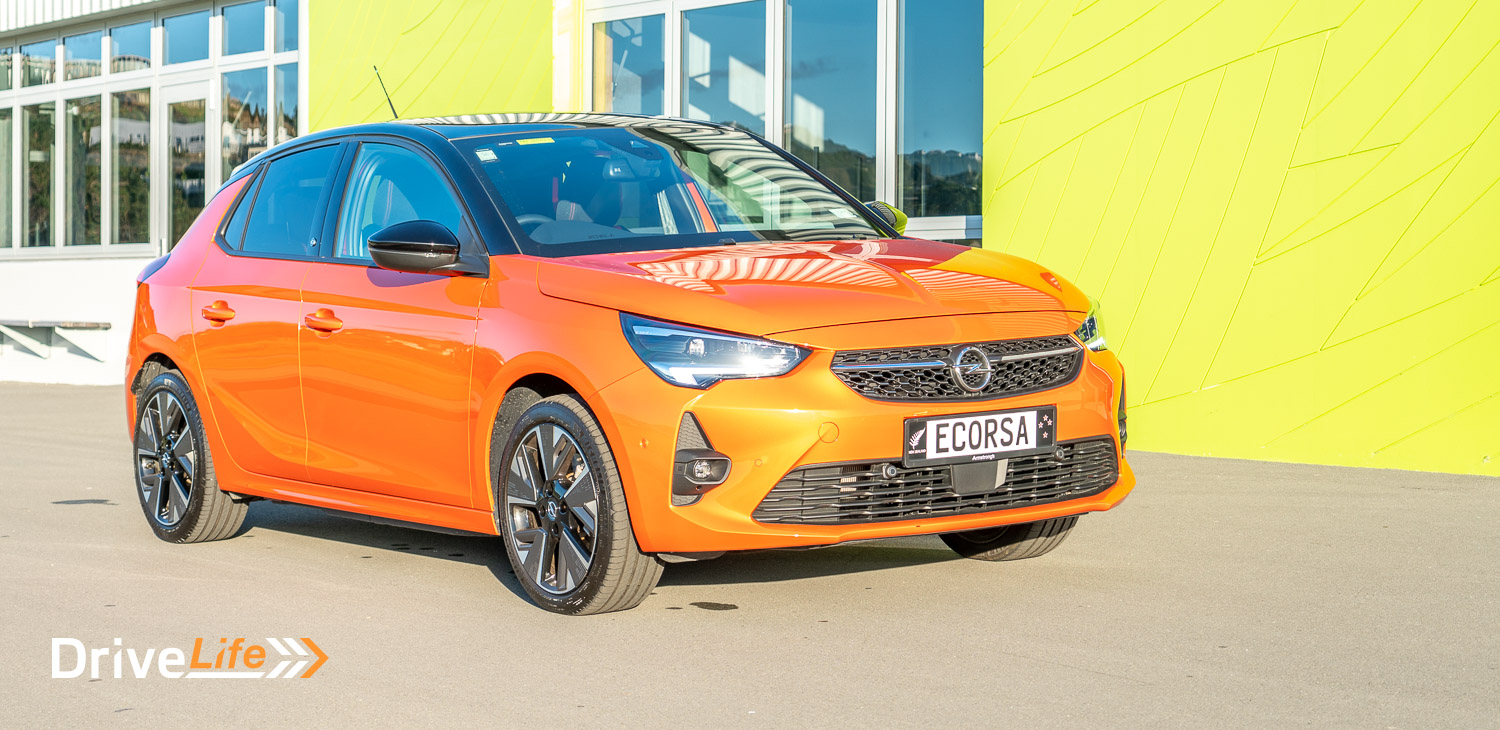
However, the Corsa-E’s biggest sticking point is in the window sticker. At a starting price of $59,990, it’s no cheaper than its quirkier and perhaps slightly more charismatic brother, the Peugeot 208-e. It’s also competing in the same price range as the BYD Atto 3 – an electric SUV offering more range and space. It’s also only a fraction below the tech-laden Tesla Model 3. Even with the government rebate factored in, it’s nearly $20,000 more than the Corsa-E’s petrol-driven half-brother. It’s a price which I’m not entirely sure its economy car roots can justify.

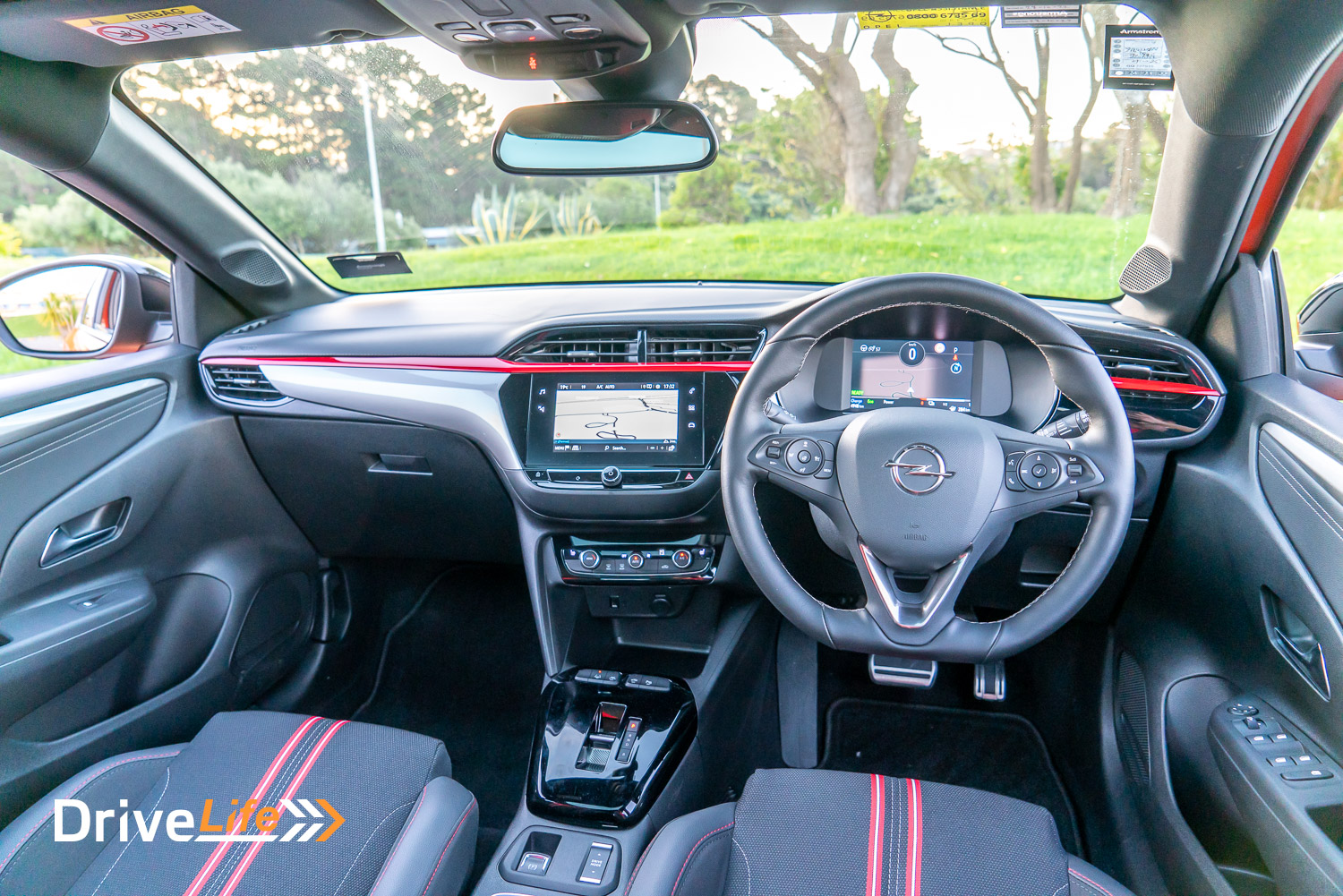
2023 Opel Corsa-E – Specifications
| Vehicle Type | Subcompact Hatch EV |
| Starting Price | $59,990 |
| Price as Tested | $61,980 |
| Engine | 50kWh battery with single electric motor (front-wheel drive) |
| Power, Torque kW/Nm | 100/260 |
| Transmission | Single speed fixed gear |
| Spare Wheel | Tyre repair kit |
| Kerb Weight, Kg | 1,455 |
| Length x Width x Height mm | 4060 x 1765 x 1433 |
| Boot Space / Cargo Capacity, Litres (seats up/seats down) | 309/1,118 |
| Energy Economy, kWh/100km | Advertised Spec – Combined – 15.2 Real-World Test – Combined – 15.5 Low Usage: 6-10 / Medium Usage 11-19 / High Usage 19+ |
| Towing Capacity Kg, unbraked/braked | n/a |
| Turning circle, metres | 10.3 Small: 6-10m / Medium 10-12m / Large 12m+ |
| Warranty | 5 years/100,000 km Opel Vehicle warranty and Roadside Assistance 8 years/160,000 km Battery & Drive Unit |
| Safety information | ANCAP Rating – 5 stars Rightcar.govt.nz – 5 Stars |
Have you enjoyed this review? Be sure to join our monthly email newsletter list so you don’t miss a single car review!











